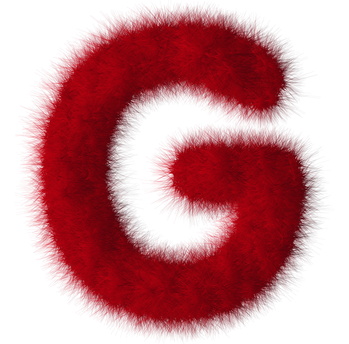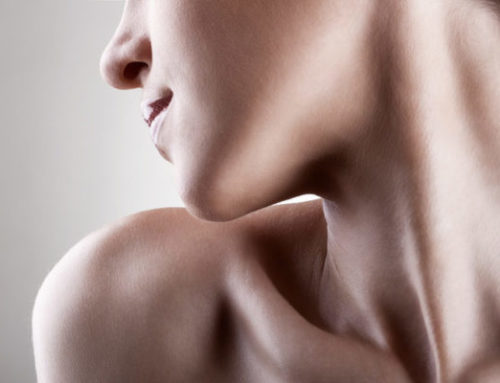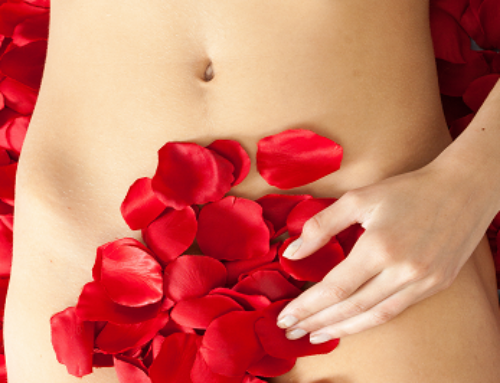What is a spot? The dictionary says that a spot is a small area different from the main area of which it is a part. Not a big deal really. But leave it to us humans to make things complicated. Whenever we are told that there is something bigger and better, we must have it, do it, own it. The G-Spot is no exception. Once we learn that there may be a G-Spot, we go hunting for it, trying to push on it, stroke it, finger it, rearrange our positions so we can hit it. We want to get enough credits to win the G-Spot Merit Badge. At least this is the way that I see a lot of people approaching sexuality. To all of you who may fall into this category, I say “Would you cut it out? It’s very annoying and it takes the sensuality out of sex, and instead makes it a treasure hunt or a competition.” So let’s see how we can break out of this idea of the G-Spot as a discrete structure and see the G-Spot as part of a much larger picture.
Whenever I talk to patients about the G-Spot, I invite them to think of it conceptually instead of a discrete anatomical structure. I would like to describe to you how I understand it so that you can getter a better understanding as well. This requires that we think about the anatomy of the area in a 3-D way. If you would like to see a straight-forward, 2-D, cross-section diagram of the female anatomy, you can find one here (very high school biology). Let me describe how I conceptualize the G-Spot.
First to consider is that the female urethra has spongy erectile tissue surrounding it which has been known by different names from Skene’s glands, to paraurethral glands, and even called the female prostate. You can get a 3-D image of this by imagining that you are holding a cup in front of you with both hands. The cup represents the urethra going from the bladder above and opening below between the labia minora. Your hands represent the erectile tissue (obviously not the exact shape or thickness), and the space between your arms represents the vagina. Imagine that the area of your thumbs is down towards the opening of the vagina. In our makeshift model, if something were to reach up between your arms and push on the area of your thumbs, it would be pressing onto the erectile tissue from inside the vagina. The erectile tissue actually fills the space between the wall of the vagina and the urethra, so although the erectile tissue is not in the vagina, you can stimulate it by pressure from inside the vagina.
Interestingly, scientists have found that this area of the vagina next to the erectile tissue has the greatest number of nerve endings of the entire vagina. There is a mix of different nerve endings, but a very large percentage of them are from the Pudendal nerve that also gets sensation from the labia, the PC muscle, the anus, and the clitoris. So when this area is stimulated, it adds to any other stimulation a woman may be receiving at the same time in any of those other areas. It is this area precisely that is also known as the G-Spot.
When a women begins to get sexually aroused, there is increased blood flow to the area which can fill up the erectile tissue. This expands the erectile tissue and can push the area of the G-Spot further into the vagina. Women have reported that when they have been aroused for awhile, this area of the G-Spot becomes more noticeable in the vagina and feels good with stimulation. If a woman is not yet aroused, the erectile tissue is not filled with blood and pressure on the area of the G-Spot can be uncomfortable, give a sensation of having to pee, or can even be painful for other women. This explains why the G-Spot tends to feels better after some time of sexual stimulation and excitation, but not necessarily before.
So I do believe the G-Spot does exist. If we can conceptualize this 3-D view of the G-Spot, it helps us understand where it is located, and also helps us better understand how it functions and responds to sexual arousal and stimulation. It is not to be seen as an independent structure by itself, but instead an area of anatomical opportunity for pleasure.






This is good work. So many men (and women) just don't understand how the G Spot works.
For myself, it seems to become more active, the longer the sexual interaction goes on. So that, by the time Ruf gets to work for the third time, I can have repeated multiples just from the pressure caused by his entry.
Did Blogger just eat my comment?
This post is good.
So many men (and women) have no idea how the G Spot works. For myself, I find that it doesn't really get going until we've had quite an extended session. Once Ruf enters for the third time, that's when the area is so aroused that just the pressure of his entry can cause repeated multiple orgasms. It's not a 'spot', it's a whole layer.